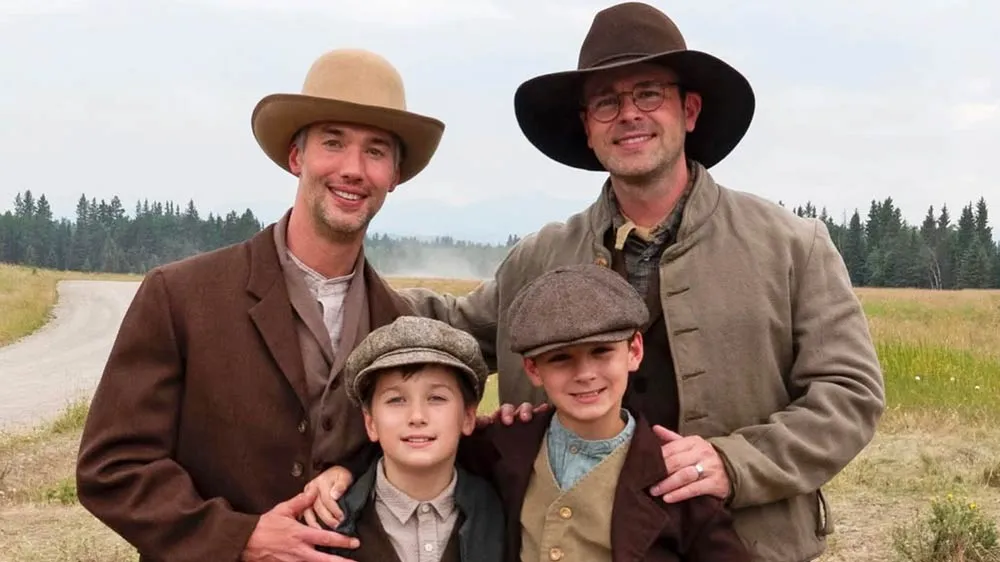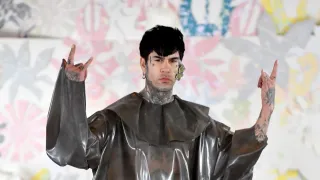November 27, 2024
Review: Angelina Jolie Is Luminous in Somber Biopic 'Maria'
Megan Kearns READ TIME: 3 MIN.
Angelina Jolie is transcendent as acclaimed opera singer Maria Callas in the biopic "Maria," directed by Pablo Larraín and written by Steven Knight. The biopic follows the last few days of her life in 1977 Paris.
Opening with her death, it's a somber film that often feels like a dirge rather than a celebration. Yet, it poignantly explores provocative issues of talent, beauty, gender, aging, and trauma.
"Maria" depicts the star soprano trapped in the past, haunted by ghosts. Specters loom from her childhood (particularly her mother) and the death of her love, Aristotle Onassis.
Maria sits outside at cafes not for the food, but rather to be "admired" by fans. She often exists in a numbed, altered reality as she takes various medications in larger doses than prescribed. Despite the concerns and protestations of her beloved housekeeper, Bruna (Alba Rohrwacher), and butler, Ferruccio (Pierfrancesco Favino), Maria refuses to see a doctor. The film features operatic and Gothic elements of madness in its depiction of Maria's mental health. She engages in imaginary conversations with an interviewer (Kodi Smit McPhee) about her life and legacy.
The film touches on how opera belongs to everyone, not merely the elite. No longer performing professionally, Maria has lost her ability to sing the way she used to without her voice suffering. She deeply grapples with existential questions: Who am I without my voice? Who am I without being an artist? Music not only allowed Maria to live a glamorous life; art was a beacon and a salve amidst strife.
I have always been a fan of Angelina Jolie as an actor, whether in roles ostentatiously bravura ("Girl, Interrupted," "Maleficent"), action-packed ("Tomb Raider," "Salt," "Wanted"), or fragilely melodramatic (her criminally underrated film "By the Sea"). Always enthralling and intriguing, Jolie is a versatile performer – and talented filmmaker – who uses the entirety of her physicality (her facial expressions, voice, posture, and body language) to portray a variety of characters and dig into the spectrum of emotions.
Larraín and Jolie leverage her star power to fuel her performance here. Maria is told in the film, most notably by her lover Aristotle Onassis (Haluk Bilginer), that she is not a beauty; her singing matters, but not her unconventional looks. It's an alarming juxtaposition, as Jolie is gorgeous, sexy, and stunning. While not a queer film per se, it's hard not to look at 'Maria' through a queer lens, since Jolie is bisexual.
While Jolie mostly lip-syncs to Callas's astounding vocals, she trained in opera singing for seven months. Her work pays off as she wrings every drop of emotion from the sung performances, leaving it all on the floor.
Gorgeous production design by Guy Hendrix Dyas and beautifully lavish costumes by Massimo Cantini Parrini abound. The cinematography by Ed Lachman often displays wide shots where the camera often lingers outside of doorways, lending both a painterly quality to the frames and an operatic one evocative of the stage. It also keeps the audience at a physical and emotional distance. But the camera moves in closer as the film progresses, allowing us into Maria's inner world. Various shots display Maria's reflection in mirrors, indicating her fractured image, her self-perception, and her obsession with her art and the adoration of fans, while simultaneously reifying the various facets of her personality and life.
"Maria" is the third film in Pablo Larraín's unofficial iconic women trilogy, along with "Jackie" (about Jacqueline Kennedy) and "Spencer" (about Princess Diana). All three are unconventional biopics. Taking liberties with facts, and set in truncated timelines, "Jackie" and "Spencer" utilize horror elements in score and cinematography to evoke eerie unease and reveal human truths about gender, fame, and tragedy.
While "Maria" feels deceptively more conventional, it still follows these same psychological drama parameters. Each film works independently or together in tandem to weave a tapestry about the constriction of societal constraints of gender and the pitfalls of fame.
The film's glacial pacing is far too slow, at times making it difficult for me to stay engaged. A thrumming frenetic energy accompanies some of Larraín's films ("Ema," "Spencer"), so the lethargy feels strange here. But Angelina Jolie's luminous and committed performance, the striking visuals, and the exploration of art as salvation kept me tethered.
"Maria" opens in theaters Wednesday, November 27, 2024 and streams on Netflix December 11, 2024.







